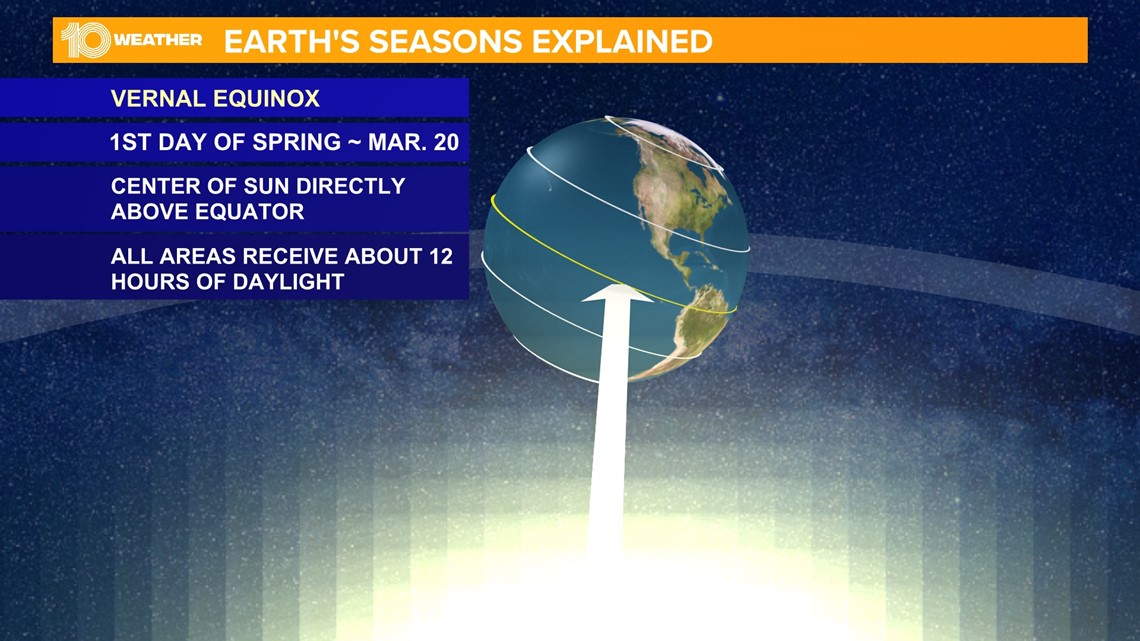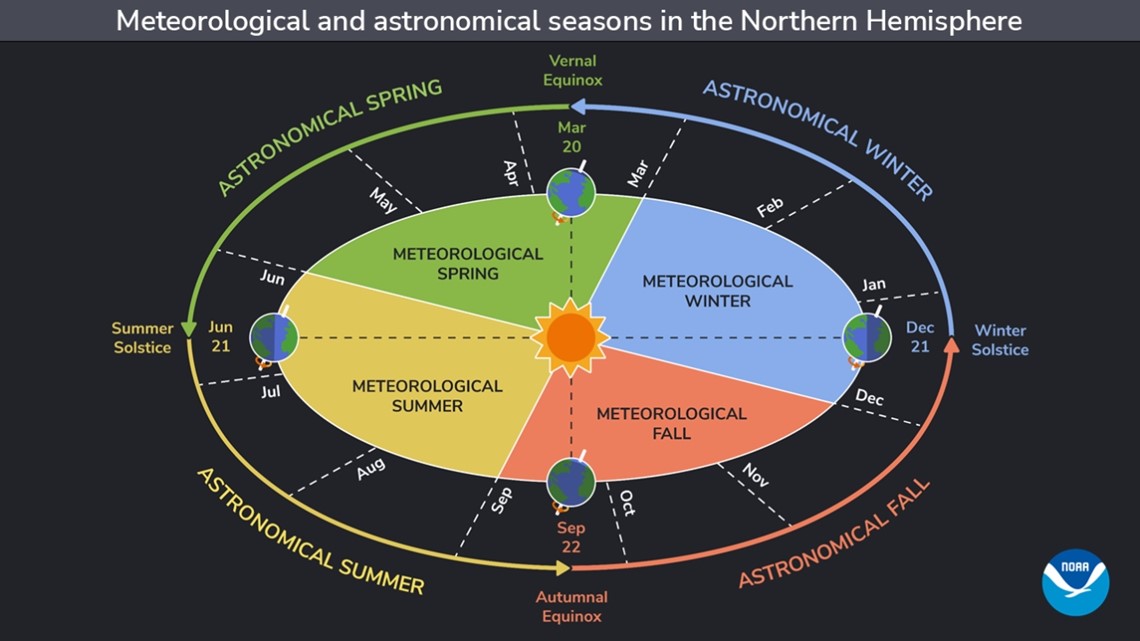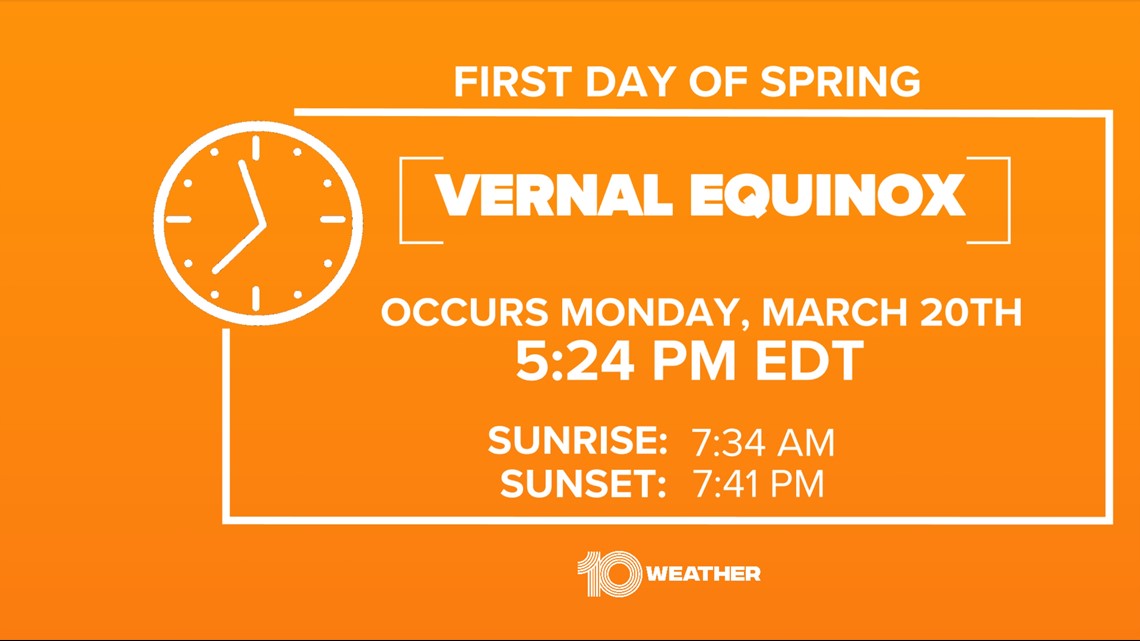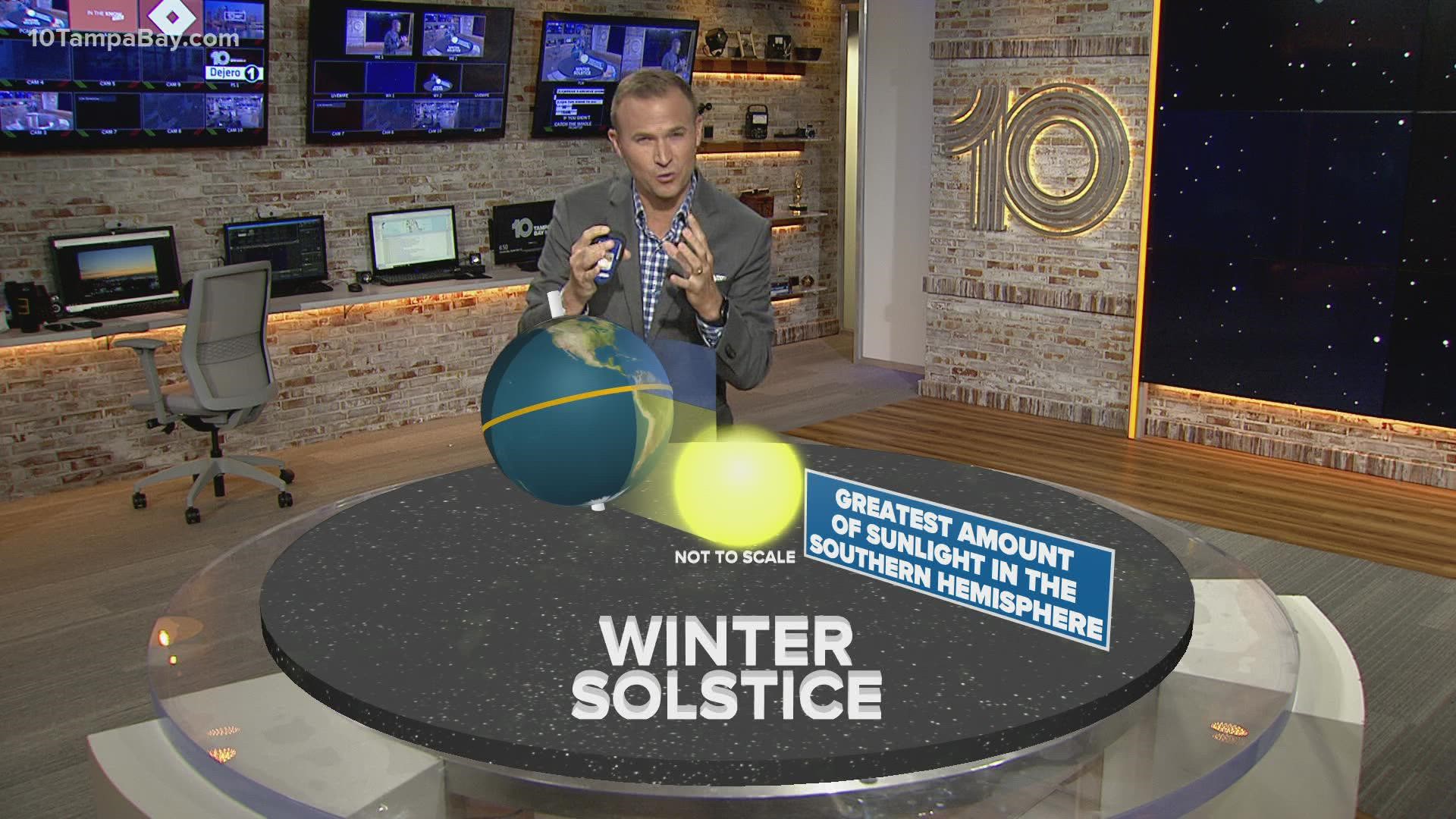ST. PETERSBURG, Fla. — Did you know that there are two separate first days of spring?
There is a meteorological spring and an astronomical spring. Meteorological seasons are determined by temperature cycles. For example, the coldest three months — December, January and February — are winter. With meteorological spring starting March 1 and ending at the end of May.
Astronomical seasons are based off of Earth's position as it moves around the Sun. Because Earth is on a tilt the angle of the Sun changes throughout the year.
On March 20, at 5:24 p.m. Eastern time, the Sun's direct rays will be centered over the equator marking the spring, or Vernal, equinox. After that, the Sun's most direct rays move north into the northern hemisphere as Earth continues to rotate around the Sun.


Astronomical spring will then continue until the summer solstice on June 21 when the Sun's direct rays are overhead the Tropic of Cancer, the northern most point.
Spring and fall are equinoxes because it is the only time of the year that the Northern and Southern hemispheres see almost equal amounts of day and night. Equinox comes from Latin words meaning equal and night, which describes the equal length of day and night.


Solstice comes from Latin words meaning Sun and to not move. This describes how the Sun appears on solstices. On those days the Sun appears to stand still at either its highest point in the summer and lowest point in the winter.


Overall, there is a three-week difference between the astronomical and meteorological seasons. But both are correct ways to mark the change in seasons.

